UC Botanical Garden—New World Desert Collection
This is the continuation of a three-part post about the University of California Botanical Garden (UCBG) in Berkeley. Part 1 was about the Southern Africa Collection. This post is about the New World Desert Collection.
New World Desert Collection as seen from the hill that makes up the Southern Africa Collection
This is how the UCBG web site describes the New World Desert Collection:
Garden expeditions from the 1920s to the 1960s yielded many of the specimens in this collection, including desert plants from the southwestern United States, Mexico, and as far south as Chile and Argentina. Several beds feature plants from Mexico's Baja California peninsula. This collection is one of the oldest in the Garden.
Deserts receive 25 cm (10 in) or less of rain each year. Many desert plants cannot tolerate our winter rains. Positioning the collection on a southwest-facing slope provides warmth and drainage critical to the survival of these plants.
Plants from desert environments in different parts of the world may have similar structural forms, resulting from a process called convergent evolution. Compare the leaf rosettes of agaves with those of the southern African aloes.
The rosettes in the following photos are great examples of this concept:
Beschorneria albiflora; this is the only beschorneria species I have, but mine is still is a baby (just one rosette)
Hechtia texensis
Dudleya pulverulenta (front), Hechtia sp. (back)
Dudleya pulverulenta
Dudleya pulverulenta; note the powder on the ground that has rubbed off the leaves
Unidentified agave species
Agave guadalajarana
Agave colorata
Agave colorata
LEFT: Yucca desmetiana ‘Blue Boy’ with Agave parryi
RIGHT: Unidentified agave with Dasylirion acrotrichum
Agave xylonacantha
Agave parryi var. huachucensis
Agave parryi var. huachucensis
Agave parryi var. huachucensis (left), Agave filifera (right)
Agave parryi var. huachucensis (left), Agave filifera (right)
Agave atrovirens var. atrovirens
Miscellaneous agaves; check out the flower stalk extending from the plant on the right
Agave vilmoriniana; it’s easy to see why its common name is “octopus agave”
Agave vilmoriniana
Agave stricta (left), Yucca schottii (right)
Agave stricta (left), Yucca schottii (right)
Agave stricta aka hedgehog agave
Agave stricta
Agave stricta
Yucca thompsoniana, a very close Yucca rostrata relative (some people say they are different forms of the same species)
Yucca thompsoniana
Dasylirion leiophyllum
Dasylirion leiophyllum (left), Yucca carnerosana (right)
Tour deck overlooking the New World Desert
Tour deck
LEFT: Dasylirion wheeleri
RIGHT: Dasylirion quadrangulatum (back), Agave striata (front)
Agave striata
But the New World Desert is about much more than just rosette-forming succulents, as stunning as they are. The large slope seen in the next photo contains a variety of cacti large and small although the selection is nowhere near as comprehensive as it as the Arizona-Sonora Desert Museum in Tucson (read my trip report from July 2012).
View of tour deck from New World Desert
Mammillaria compressa
Ferocactus glaucescens
Opuntia compressa
Very large Opuntia sp.
Very large Opuntia sp.
Very large Opuntia sp.
Very large Opuntia sp.
Very large Opuntia sp.
Opuntia kuehnrichiana
Echinopsis lamprochlora
Puya alpestris and Echinopsis peruviana
If you are a fan of terrestrial bromeliads, you’ll love this wicked puya hedge. Every time I sit on this bench I feel phantom barbs hooking into me from behind :-).
Puya venusta
Puya venusta
In the next photo you’ll see how woody each puya rosette gets. Regular maintenance is needed to prevent this ever expanding clump from intruding onto the walkways.
Puya venusta
Seen in the last two photos in this post, Deuterocohnia brevifolia is a much smaller bromeliad than the puyas above. The “cushions” it forms look deceptively soft from a distance, but up close you realize that they, too, are armed to the teeth.
Deuterocohnia brevifolia
Deuterocohnia brevifolia
After so much spikiness, part 3 of this post will take you to the much less dangerous Asian Collection filled with soft and gentle textures.
Related posts:




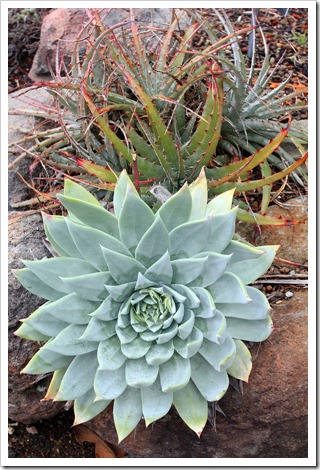



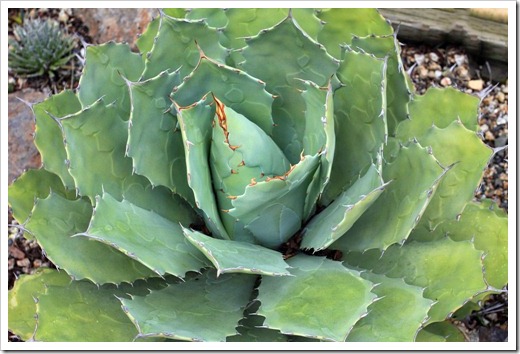

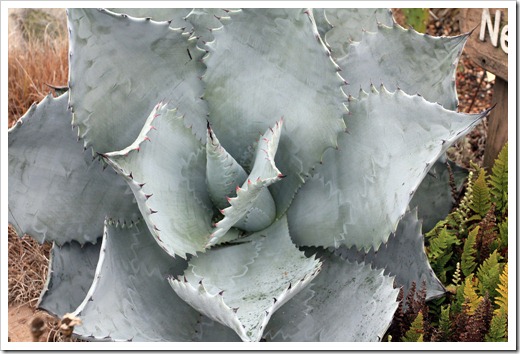





















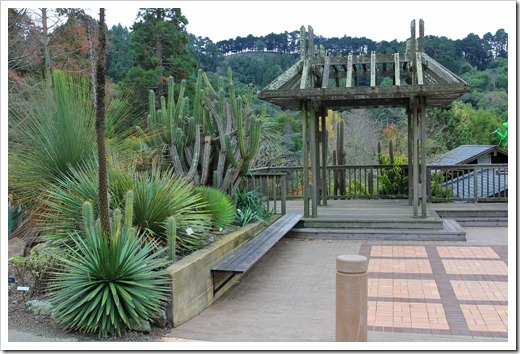







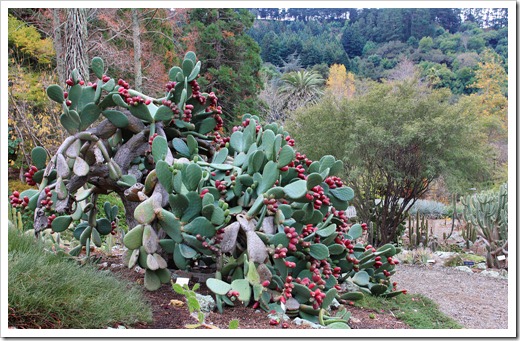




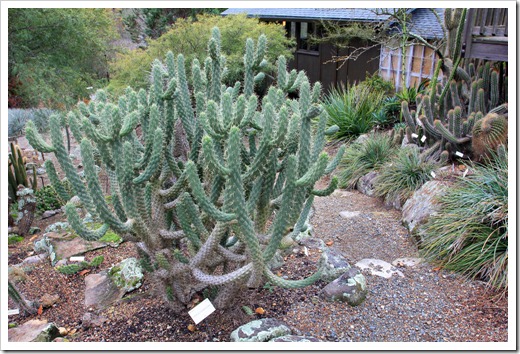
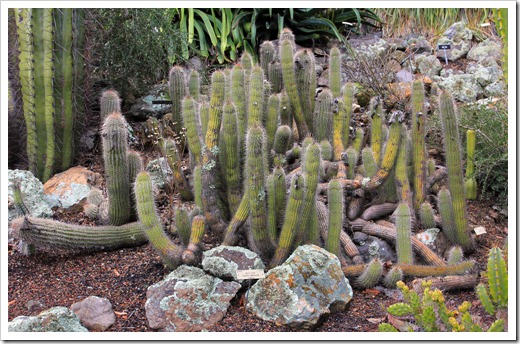
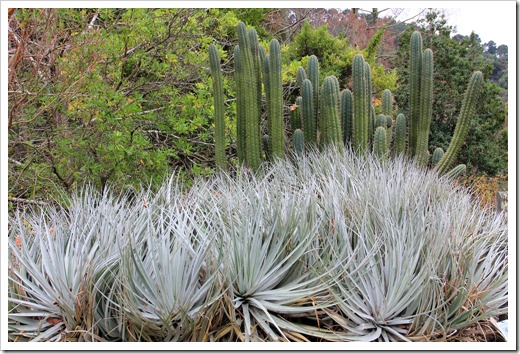



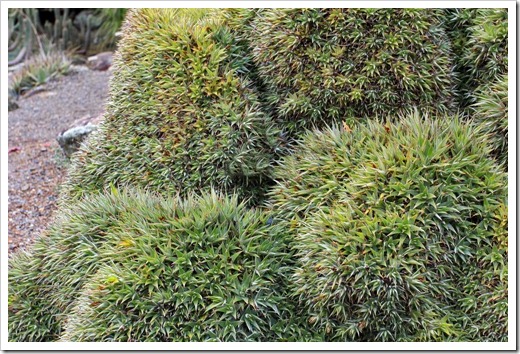

I love the Berkeley Botanical Gardens, so glad to have made it this summer. As with any garden things are changing everyday, thanks for giving us the update!
ReplyDeleteI agree! That's why I never get bored revisiting places I've been to before.
DeleteSo many fantastic plants in this post, I don't know where to start. Three of them really jumped out at me: Hechtia texensis, Agave stricta, and Deuterocohnia brevifolia. Oh, and Mammillaria compressa. Wow!
ReplyDeleteThey are among my favorites, too. I couldn't believe how colorful that Hechtia texensis was.
DeleteSo much to love about this post I can't even speak (or should I say type). Great photos! I would have been walking around with my mouth open the whole time. LOL And looks like I will be moving my hedgehog succulent!
ReplyDeleteLOL, are you moving your hedgehog agave to give it more space?
DeleteLet's go to the UCBG together in early summer when the cacti are in bloom!
Wow Gerhard, amazing! I think my favorite photo group is of the Agave striata. I loved the way you started with a distant photo of the clump and then moved in closer and closer. Simply gorgeous, thank you!
ReplyDeleteThank you, Loree! It's an almost impossible to take a bad photo at UCBG.
DeleteDrool! Well not literally, lol! So many fantastic plants! Wish we can grow succulents permanently outdoors like that here. I know some large arid beds do exist here but not quite like that, it's simply too wet here.
ReplyDeleteAgave parryi var. huachucensis, I want more of it. I only have one or two and if I see a bigger one for sale next year will definitely nab it (price permitting!).
I'm glad you enjoyed the post!
DeleteHuachucensis is supposed to be biggest of all forms of Agave parryi. It certainly makes stunningly beautiful rosettes when grown in full sun. I have a small one in a pot and it's much more open because it only gets morning sun.
Thank you again for this awesome post Gerhard. Agave striata is on my list now. They look so beautiful in masses.
ReplyDeleteAgaves in a mass planting are awesome!
DeleteBeautiful place. The plants look happy and well grown despite the extra dose of rain.
ReplyDelete